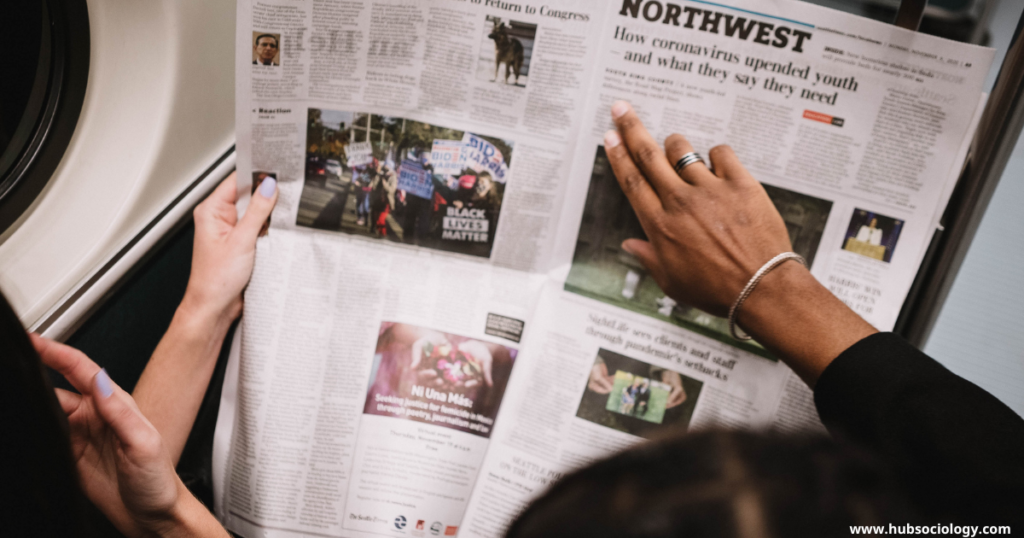Introduction of Managing Social Selves via Media

In the digital age, media has become an integral part of everyday life, shaping how individuals construct, present, and manage their social selves. From social networking sites (SNS) like Facebook, Instagram, and Twitter to professional platforms like LinkedIn, individuals actively engage in self-presentation, impression management, and identity performance. Sociologically, this phenomenon can be analyzed through various theoretical lenses, including Erving Goffman’s dramaturgical approach, symbolic interactionism, and Pierre Bourdieu’s concept of social capital. This article explores how individuals manage their social selves via media, the implications of these practices, and the broader societal consequences.
Table of Contents
Theoretical Foundations: Goffman’s Dramaturgy and Symbolic Interactionism
Erving Goffman’s The Presentation of Self in Everyday Life (1959) provides a foundational framework for understanding self-presentation in media. Goffman uses a dramaturgical analogy, comparing social interactions to theatrical performances where individuals play roles, manage impressions, and use “front stage” and “backstage” behaviors. In the context of digital media:
- Front Stage (Public Profiles): Users carefully curate posts, images, and updates to present an idealized version of themselves.
- Backstage (Private Interactions): More authentic or unfiltered behaviors occur in private messages or closed groups.
Symbolic interactionism further elaborates on how individuals derive meaning from social interactions. According to George Herbert Mead and Herbert Blumer, the self is constructed through social exchanges, where individuals interpret symbols (likes, comments, shares) to shape their identities. Media platforms serve as arenas where these symbolic interactions take place, reinforcing or challenging self-concepts.
Impression Management in Digital Spaces
Impression management refers to the conscious or subconscious strategies individuals use to influence how others perceive them. On social media, this involves:
- Selective Self-Presentation: Users highlight desirable traits (e.g., travel photos, professional achievements) while concealing less favorable aspects.
- Filtering and Editing: Photo filters, curated captions, and even AI-generated enhancements contribute to an idealized self.
- Audience Segmentation: Different platforms cater to different audiences (e.g., LinkedIn for professionalism, Instagram for lifestyle, Twitter for opinions).
Research by Hogan (2010) introduces the concept of the “exhibitional audience,” where users perform for an imagined audience, often leading to exaggerated or inauthentic portrayals.
Identity Performance and Authenticity

While media enables greater control over self-presentation, it also raises questions about authenticity. Sociologists debate whether digital identities reflect “true” selves or constructed facades.
- The “Real Me” vs. the “Ideal Me”: Some users strive for authenticity, sharing vulnerabilities and struggles (e.g., mental health advocacy). Others pursue an aspirational identity, aligning with societal ideals of beauty, success, or popularity.
- The Role of Algorithms: Social media algorithms prioritize engaging content, incentivizing users to adopt more sensational or performative behaviors.
Zygmunt Bauman’s concept of liquid modernity suggests that in a rapidly changing digital world, identities are fluid, constantly reshaped by online interactions.
Social Capital and Networked Selves
Pierre Bourdieu’s theory of social capital—resources gained through social networks—applies to digital spaces. Online, social capital manifests through:
- Followers and Connections: A large network can translate into influence (e.g., influencers, thought leaders).
- Cultural Capital: Sharing knowledge, memes, or trends enhances one’s status within digital communities.
- Bridging vs. Bonding Capital: Weak ties (acquaintances) provide diverse perspectives (bridging), while strong ties (close friends) offer emotional support (bonding).
However, social media can also reinforce inequalities. Those with existing offline advantages (e.g., celebrities, elites) accumulate more online capital, while marginalized groups may struggle for visibility.
The Dark Side: Anxiety, Surveillance, and Alienation
While media facilitates self-expression, it also introduces challenges:
- Digital Dualism & the Fear of Missing Out (FOMO): The blurring of online/offline selves can lead to anxiety over unattainable comparisons.
- Surveillance and Privacy: Foucault’s panopticon metaphor applies—users modify behavior knowing they are constantly observed (by peers, corporations, governments).
- Self-Commodification: Influencers and content creators often turn their identities into marketable brands, leading to self-exploitation.
- Echo Chambers and Polarization: Algorithmic filtering reinforces existing beliefs, limiting exposure to diverse perspectives.
Conclusion: Navigating the Digital Self
Managing social selves via media is a complex, dynamic process shaped by sociological forces. Goffman’s dramaturgy, symbolic interactionism, and Bourdieu’s social capital offer valuable insights into how individuals perform, negotiate, and commodify identities online. While digital platforms empower self-expression, they also impose pressures—authenticity versus curation, connectivity versus alienation.

For sociology students, studying these phenomena provides critical tools to understand contemporary identity construction, social stratification, and the evolving nature of human interaction in the digital era. As media continues to evolve, so too will the ways we present, perceive, and manage our social selves.
Topic Related Questions on Managing Social Selves via Media
5-Mark Questions on Managing Social Selves via Media (Short Answer)
- Define impression management in the context of social media.
- What is Goffman’s dramaturgical approach to self-presentation?
- How does symbolic interactionism explain identity formation on social media?
- What is the difference between “front stage” and “backstage” behavior in digital spaces?
- How do algorithms influence self-presentation on social media?
- What is social capital in the context of online networks?
- Explain the concept of the “exhibitional audience” in social media.
- How does FOMO (Fear of Missing Out) affect social media users?
- What is the role of filters and editing in online self-presentation?
- How does Pierre Bourdieu’s theory apply to digital social networks?
10-Mark Questions on Managing Social Selves via Media (Brief Essay/Explanation)
- Discuss Goffman’s dramaturgical model and its relevance to social media behavior.
- How do individuals perform different identities across platforms like Instagram, LinkedIn, and Twitter?
- Explain the concept of “liquid modernity” (Bauman) in relation to digital identities.
- What are the advantages and disadvantages of selective self-presentation on social media?
- How does social media contribute to both bridging and bonding social capital?
- Discuss the impact of surveillance and privacy concerns on online self-presentation.
- How do social media algorithms shape user behavior and self-perception?
- What are the psychological effects of constant comparison on platforms like Instagram?
- How does the commodification of identity occur in influencer culture?
- Analyze the role of authenticity versus curation in digital self-presentation.
15-Mark Questions on Managing Social Selves via Media (Long Essay/Critical Analysis)
- Critically examine how social media platforms facilitate impression management using Goffman’s dramaturgical theory.
- “Social media turns identity into a performance.” Discuss this statement with reference to sociological theories.
- How does social media reinforce or challenge existing social inequalities in terms of access to social capital?
- Analyze the role of surveillance capitalism in shaping online identities, referencing Foucault’s panopticon.
- To what extent does social media promote authenticity, and to what extent does it encourage self-commodification?
- Discuss the psychological and sociological consequences of living in a digitally mediated society.
- How do echo chambers and algorithmic filtering impact identity formation and social polarization?
- Compare and contrast the concepts of the “real me” and the “ideal me” in digital self-presentation.
- Evaluate the argument that social media has made human relationships more superficial.
- How can sociological theories help us understand the future of digital identity in an AI-driven media landscape?
